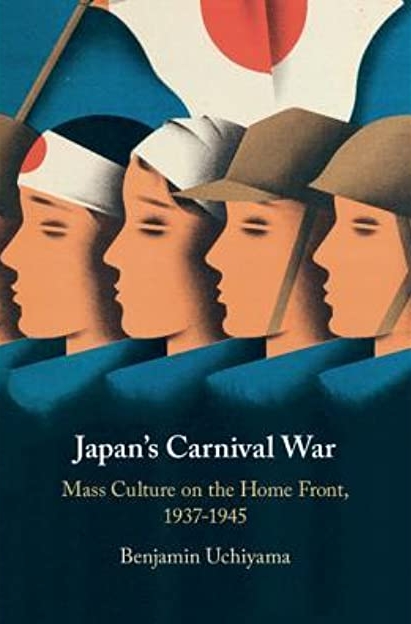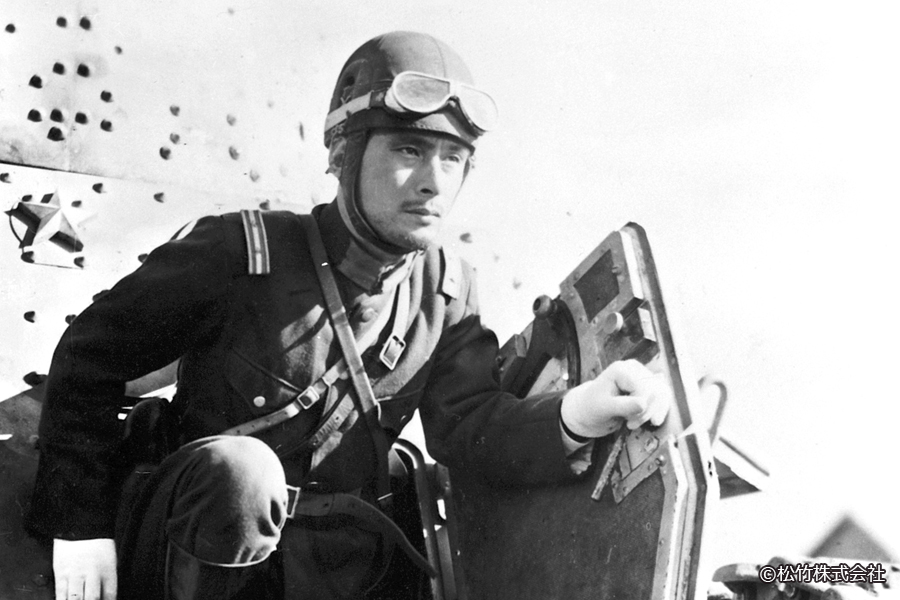Books: Japan’s Carnival War
May 29, 2022 · 0 comments
By Jonathan Clements.

Many readers of this blog will be familiar with the boggling weirdness of Momotaro, Sacred Sailors, that animated oddity in which the child-hero from Japanese school textbooks is reimagined as a patriotic general, leading animal marines in an assault on foreign devils. But its not just the premise of Sacred Sailors that seems so strange to us today, it’s the presentation, as if this were a cartoon made in a world in which military life was everything. In Japan’s Carnival War: Mass Culture on the Home Front, 1937-1945, Benjamin Uchiyama argues that there is far more to it than that, and that the ridiculously enthusiastic gung-ho attitude encouraged by the military censor was sure to be at odds with that of the film-makers, and indeed many of the audience.
Uchiyama’s book is a treasure trove of quirky and unexpected approaches to a much-retold story, regarding Japan’s Pacific War not through the lens of its battles and victories, but through the stories the Japanese told themselves about themselves. In that regard, it occupies a welcome place in a growing sub-genre of historical reappraisals, alongside the works of the likes of Hikari Hori and Sven Saaler. He notes, for example, how media enthusiasm for young aviators slowly transformed into the cult of the Kamikaze, but also quotes from a heart-rending poem by one of the pilots, in which he muses that he loves (American) jazz so much that he is even going to listen to it before he climbs into his cockpit, and that “it’d be best if peace comes real quick.”

Uchiyama is particularly good on the media coverage of the 1937 Nanjing campaign, zeroing in on reporters scrambling to be “first” in each battleground, and doing shady deals with military units whose commanders were desperate for home-front fame, and annoyed that they didn’t have their own pet journalist. News, and fake news, are integral parts of Japan’s media experience of the war, and Uchiyama has much to say about the genesis of the “Hundred Man Killing Contest”, something that was enthusiastically reported in the media of the time, but then vehemently denied by the Japanese right-wing after the war.
He outlines a bizarre obsession in the Japanese media with the presence of female soldiers in the Chinese army, repeating various garbled accounts of all-girl platoons and/or morale-boosting companies of patriotic amazons. There is, I suspect, substantially more to unpack here, not the least in one account of a Japanese unit that is “surprised” to discover that the platoon of “soldiers” they have just slaughtered turned out to be women.
The free-for-all of Japanese journalism is abruptly curtailed after the Rape of Nanjing, not because of the atrocities committed in the city, but because the Japanese army was so thoroughly bogged down in China that the authorities wanted to control the message. The scrum of war correspondents was herded into a dedicated “Pen Unit”, bussed by the army to approved locations and handed talking points of the right sort of things to report on.

One such topic would be the “military gods” (gunshin – a term I usually translate as “war gods”), heroes thought worthy of official canonisation not merely as poster boys for a martial Japan, but as media icons celebrated in songs, stories and movies. Japan had been pushing “military gods” into the school curriculum since 1911, but to illustrate how radically their standing rose, Uchiyama notes that a 1942 compendium managed to devote half its page count to men who had done something notable in the that last five years. As I have noted elsewhere, the kind of person celebrated as a “military god” is often a baffling choice. Uchiyama points to a guy who crashed his plane into someone else’s, presumably deliberately, a tank commander who was shot when he popped his head out of his vehicle, and a guy who was killed in action, but subsequently found to have written some philosophy books, and was hence re-imagined as a sort of intellectual.
But as Uchiyama notes himself, the Japanese people were not necessarily fooled by this nonsense. While the media continued to make hysterical claims about a nation of one mind and one resolve, the movie press was merciless in its critiques of movies in which a military committee had been put in charge of making entertainment. Soldiers themselves also piled in on the military movies, citing screeds of rookie mistakes and tactical gaffes.

Uchiyama chooses to begin in 1937, rather than 1931, for a variety of reasons, not the least the fact that the Nanjing campaign and its aftermath were the true beginnings of Japan’s mobilisation as a nation in a state of “total war”. The situation made celebrities not merely of the soldiers on the frontline, but of the “industrial heroes” toiling to supply them. As Uchiyama observes with his customary originality of angle, it also made villains out of some of them, with various government big-wigs griping that Japanese teenagers had become a gaudy and reckless social underclass, with fathers away fighting, mothers working in factories, and the teens themselves earning big money in the wartime factory economy, and blowing it all on “reckless spending and foolish carousing.” Some of them, it was alleged, were even travelling around Japan in disguise, donning school uniforms in order to avoid difficult questions.
Meanwhile, the faceless minions of the military-industrial complex continued to put their collective feet in it. Attempts to drum up support for the boys on the frontline by sending care packages backfired when the soldiers complained that they were getting impersonal, anonymous grab-bags of random items. What they wanted was something with a bit of heart in it – gushing letters from patriotic girls, perhaps or some cigarettes. Not, as one irate soldier revealed, a ten-year-old newspaper and a magazine for housewives.
Repeatedly, Uchiyama’s poking around non-traditional sources reveals all sorts of fascinating details about Japan’s war. He notes for example, that whereas the WW1 experience had led the allies to factor in furlough as a necessary decompression for frontline soldiers, Japan, which had very little army experience in that conflict, had yet to develop the understanding that its fighting men urgently needed downtime and rest. He delves into the fate of numerous soldiers who eventually did return home for one reason or another, and the sudden explosion in police reports of violent behaviour as men with PTSD or an axe to grind railed against the situation on the home front.

He finishes with an examination of movie stars in the war era, but pointedly notes that he is not going to write “another historical overview of Japanese wartime cinema.” What interests him far more is the impact of the 1939 Film Law, which attempted to turn a cinema obsessed with foreign movie stars (even the teenage factory delinquents modelled themselves on Clarke Gable) into one that rejected all non-Japanese content as treasonous. The mind boggles at some of the memorabilia he describes, including a “jack-in-the-box-style erotic toy”, which was apparently sold alongside a swiftly-banned calendar of starlets in uniform.
Of particular interest is his account of the 1941 examination that would-be film industry personnel were obliged to sit. In it, the people who hoped to be making the next season’s media were obliged to write a letter to a notional frontline soldier, discuss the importance of the alleged 2,600th anniversary of the first (legendary) emperor of Japan, and explain why and how Japan had come to be allied with Nazi Germany and Fascist Italy. Uchiyama discusses Mitsuko Mito, a waitress plucked out of obscurity and groomed as the new forces’ sweetheart – as ever with propaganda, such stories are fascinating because their artistic heritage has often been wiped away.

Well, not entirely. When Hiro’o Onoda, the famous Japanese military holdout, finally returned home in 1974 from his decades of standing watch on the Philippines, the Japanese media rushed to interview a man who was effectively a time-traveller from the year 1945. When asked what kind of woman he liked, he immediately replied: “A Mitsuko Mito type.”
Retired from acting, a recluse in her late fifties, Mito send her last fan a bouquet of flowers.
Jonathan Clements is the author of Japan at War in the Pacific. Japan’s Carnival War, by Benjamin Uchiyama, is published by Cambridge University Press.
Leave a Reply